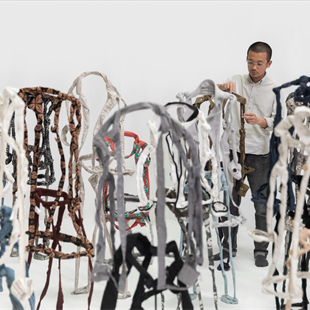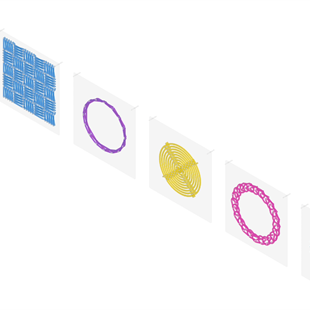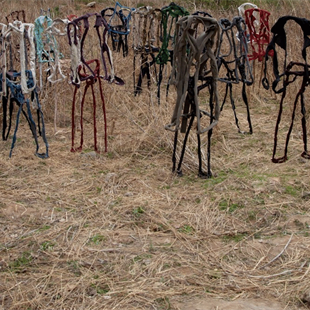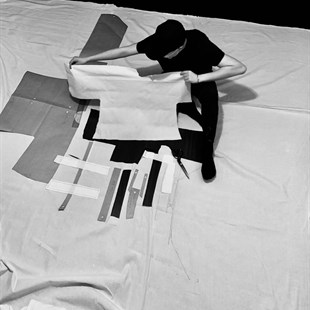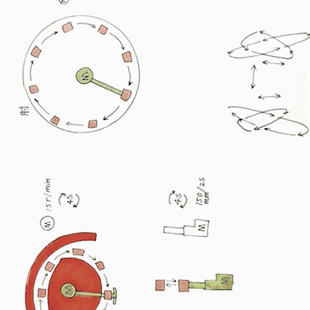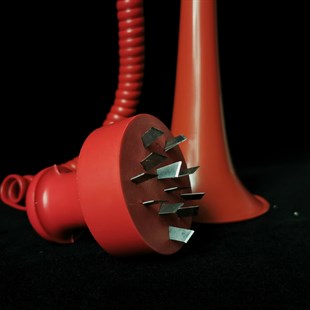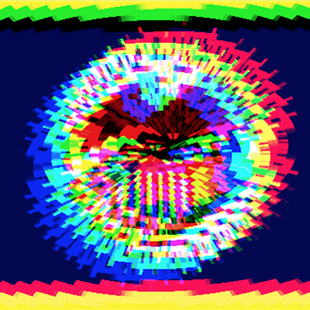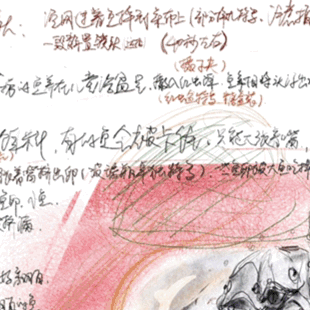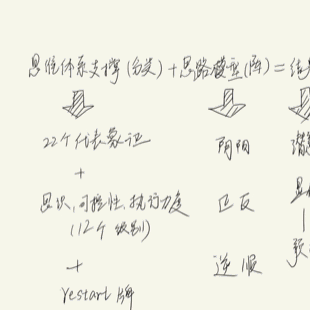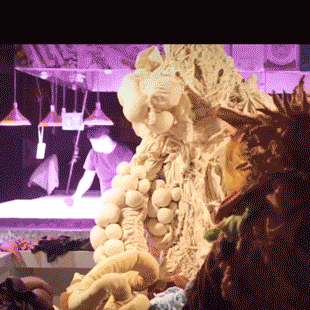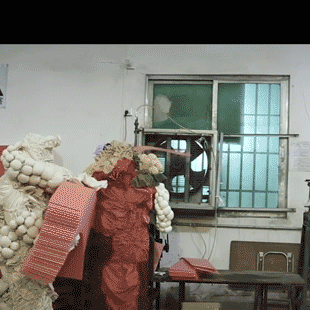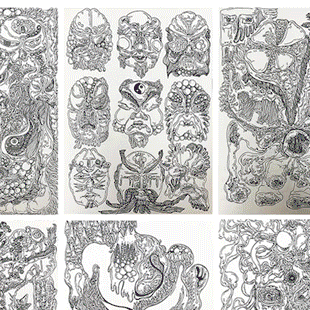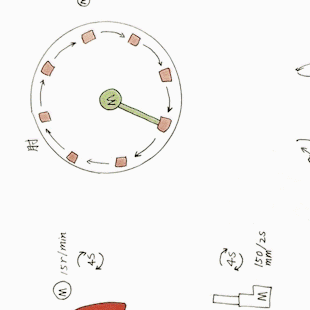
Editor’s note: In order to cope with the impact of the pandemic, for the first time, the Central Academy of Fine Arts (abbr. CAFA) has launched virtual art galleries for students who will graduate, building a solid platform to display students’ academic achievements, which to a greater extent is bound to attract participation and attention from everyone. Offline exhibitions can collect feedback from the audience as soon as they visit, and they can accurately receive information from the art market and then become a stage for exchange and learning between students ... In comparison, we know very little about the online graduation exhibition. How do teachers from CAFA look at this new form of graduation exhibition? How do they guide students to create? What challenges did they encounter? CAFA ART INFO has interviewed with Professor Wu Jian’an from the School of Experimental Art, CAFA. He talked about his thinking and comprehension from the perspectives of the Graduation Creation Course in the School of Experimental Art, students’ creations, the nature and future development of online exhibitions, his own state in the pandemic and so on.
Interviewee | Wu Jian’an (Professor from School of Experimental Art, CAFA)
Interviewer | Yang Zhonghui/CAFA ART INFO
Interview time丨April 22, 2020
Photo Courtesy of Wu Jian’an & Graduating Students from School of Experimental Art, CAFA
Translated and edited by Sue/CAFA ART INFO
I. Creative Plan Course
CAFA ART INFO: Hello Professor Wu, because of the pandemic situation, CAFA graduation exhibition has changed a lot this year, so we have paid attention to the topics related to students' graduation creations. Can you talk about the Graduation Creation Course in the School of Experimental Art?
Wu Jian’an: Many courses in the School of Experimental Art include creative factors. Unlike other disciplines of CAFA including the various majors in the School of Fine Arts, the distinction between our fundamental and creative courses is not so obvious. The Graduation Creation Course of the School of Experimental Art can be roughly divided into two stages. The first stage is the “Creative Plan Course”, which is also the main component of the creation class of our school. The course was initiated by Mr. Lyu Shengzhong and it mainly deals with the many problems that may arise in creations at the stage of copywriting. Students need to sort out and adjust their creative ideas and further share and discuss them with everyone. After the teachers put forward their suggestions, they will form the final creative texts. The purpose of this stage is to help students construct creative ideas and master creative methods, and it can also teach students the skill to survive in the art world after leaving school. Since many exhibitions, whether they are domestic or foreign, now have such a characteristic, it is necessary for an artist to provide the curator with an exhibition idea first before a work exists in an exhibition. If the artist can provide a creative plan, it is so intuitive that the curator can determine whether to invite the artist to the exhibition.
When it comes to the graduation creation, it is also necessary to go through a process of sorting out the creative plan, and then to realize the plan in detail. The curriculum at this stage requires a strong autonomy for students and at the same time requires a suitable space for creation. Our students need to mobilize their own resources to find a space to complete their works. In the process of on-site production by students, teachers will collectively visit the student's working spaces to see their work progress and the appearance of their works, and guide them in making adjustments. This is the general teaching model of our creation course.
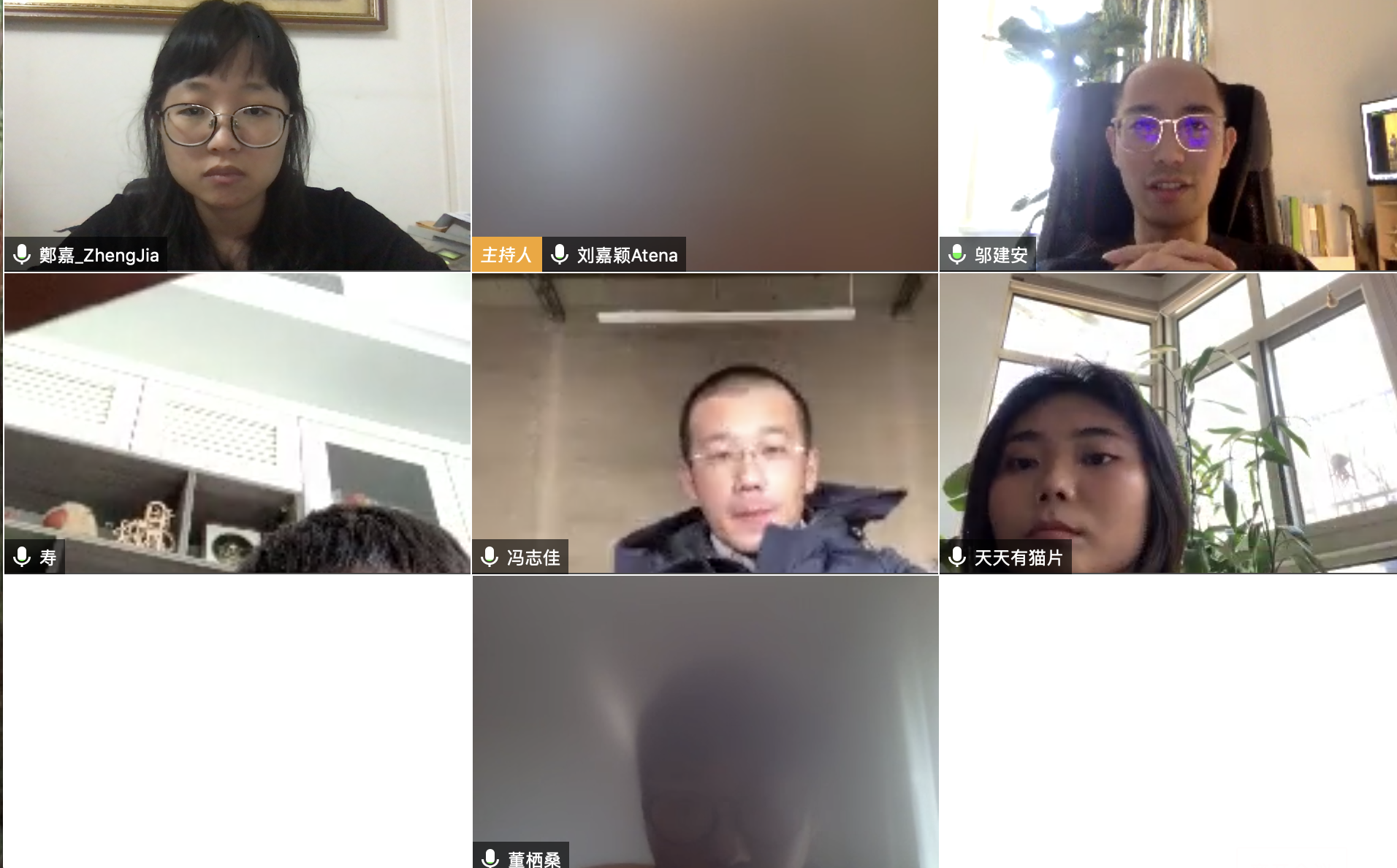
Professor Wu Jian'an guided postgraduates to conduct graduation creations
CAFA ART INFO: For the pandemic, schools are closed, teachers and students have also entered the online teaching mode, how does this affect your creative class teaching?
Wu Jian’an: CAFA has a general guiding direction for graduation creation, but the online graduation exhibition actually seems strange to us and we don’t know exactly how to form online creations. The main reason is that students have diversified types of creations. I think if it is a graphic design or video, it will be relatively simple to operate, and this type of work might encounter fewer difficulties than when it is displayed online. However, there are many students’ works that need to be experienced on-site, including materials, spatial relationships, a sense of a live atmosphere and so on. The combination of these different factors and needs constitutes a major challenge for creations for graduation exhibitions.
In the Graduate Creation Class at the School of Experimental Art, the working methods for undergraduates and postgraduates are different. The postgraduate students are mainly supervised by their own tutors and the tutors guide their students based on their own experience in publishing works on the internet. Undergraduates are mostly suggested by a team of teachers. We require students to provide their own creative progress reports nearly every week. Every week to two weeks, each studio will organize a group meeting for students to see the specific creative progress and provide them with suggestions. After the meeting, each student has a specific teacher who is responsible for supervision. Our school has a total of three studios, each with five or six teachers and ten to twelve students. Each studio is managed in a different way.
In the studio of experimental art where I work, the creative teaching is greatly affected by the pandemic. Because when students make works, we need to see what they do. Many feelings are fermented and formulated in the relatively close contact of the space and then they are noticed. Currently we can only communicate with students through pictures, videos and other sensible things are difficult to communicate in such an inefficient way. But there is also a little advantage, because our studio requires teachers to communicate with students in the form of text, rather than voice. At this time, the communications between students and teachers are written and textualized, which is undoubtedly strengthening the students’ writing ability. At the same time, many problems conveyed by tone or movement during face-to-face communication usually need to be expressed in an accurate message which can allow more people to understand our working methods, but it cannot replace the rich information of face-to-face communication. Therefore, at this point, it can be said that there are advantages and disadvantages.
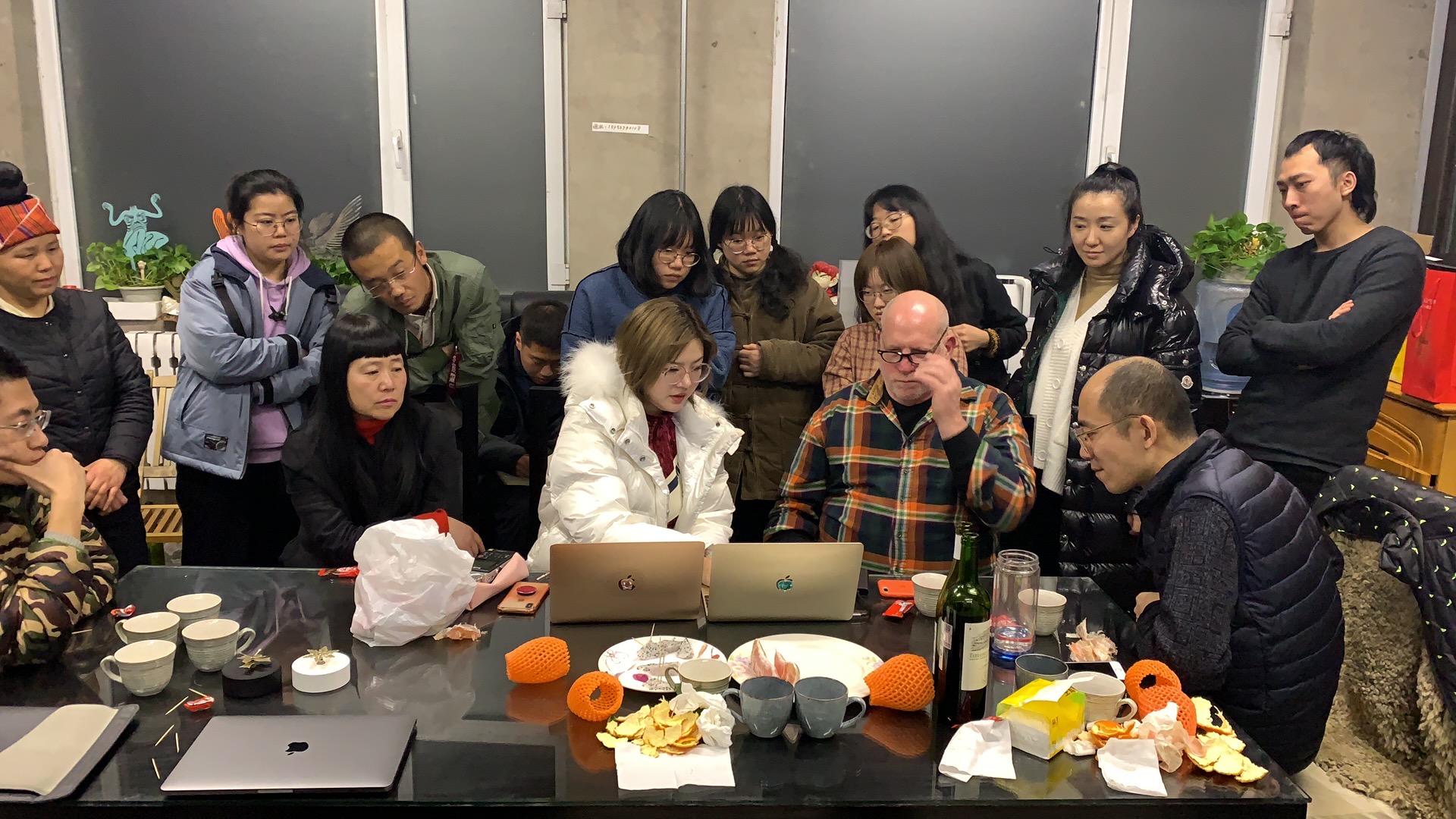
Professor Wu Jian'an, Mark Cooper and Cai Jin joinly instructed students’ creations before the pandemic occurred


Students created in the studio before the pandemic
II. Students’ Creations Under the Influence of the Pandemic
CAFA ART INFO: The pandemic has changed the teaching mode of teachers, so what impact does this have on the actual creations of students?
Wu Jian’an: There are absolutely certain influences but we are still in the whirlpool of the pandemic. It is difficult for us to assess the extent and impact of the pandemic on us. This is a very important issue, and it is worth discussing over a long period. This time, I saw that the pandemic had a great impact on people's emotions and it has also imposed severe restrictions on people's bodies. I think all these things will be reflected in the works. For example, my postgraduate student Zheng Jiayan, her creation is a wearable puppet show, just like clothes, when it is put on, it becomes a sort of “idol” thing. She originally planned to display the works in the form of live performance drama but when she completed her graduation creation during the pandemic, she actually made a film using wearable puppets. When I watched this film, I felt something profound, which was closely related to the issue we are experiencing now. She adopted a very intentional, ambiguous, and surreal method of expression. This “idol” suddenly became the people at the bottom of society. They were infected with the virus and became another group of people. This group of people cannot dream, it did not mean that you cannot have dreams though your dreams will be related to a disaster. In fact, she did not think about these things clearly when she conceived the work but the pandemic gave people a physical and mental stimulation, changing everyone on a subconscious level and changing the direction of the emotional output of the artist's creation.
Feng Zhijia, another postgraduate student, has been working on paintings but this time he created a large set of installations. He made some transparent human figures with iron wires and old clothes, like ghosts, floating or walking in the air. These clothes still carry traces of the former masters’ figures, personality preferences, etc., but the hollowed clothes are light and fluffy, although they are ethereal, they do give people a very depressed feeling. These feelings are brought about by the pandemic. These young artists translated their deep feelings in this period into visual forms, which is particularly touching.
CAFA ART INFO: Please tell us about the overall creative state of the graduating students you have guided this year.
Wu Jian’an: I am responsible for the graduate creation guidance for three undergraduates and six postgraduate students this year. I am also responsible for the supervision of the three undergraduates. Our studio has a weekly reporting system. The students use a graphic form to record what they did this week and what they thought. They have been following me for a weekly report since the third grade. When they are in the fourth grade, I have also urged them to report on their progress in work.
The creations of these nine graduates mainly revolve around the following dimensions
1. Contemporary transformations of traditional languages: postgraduates Zheng Jiayan and Shou Shengnan belong to this category;
2. Expansive exportations in ontology language of art: postgraduate Feng Zhijia and undergraduate Zhao Hanqing and Guo Jiaji belong to this category;
3. Artistic thinking of social issues: In the daily teaching of the School of Experimental Art, “problem awareness” and “critical thinking” are frequently mentioned as crucial words. In such a teaching system guided by traditions, the students turned their attention to society around them, trying to answer their thinking about social issues in artistic ways: postgraduate Tong Yanming belongs to this category;
4. The scientific thinking and new means of technologies are involved in the exploration of art expressions: postgraduate Liu Jiaying belongs to this category;
5. Individualistic artistic expressions of introspection and healing: postgraduate Jin Tiantian and undergraduate Yuan Xiaomeng belong to this category;
CAFA ART INFO: How do these students feel at home? When confronted with the new form of graduation exhibition, do they feel anxious?
Wu Jian’an: In this case, anxiety is not necessarily a bad thing. Anxiety actually means that you have found that you may have some shortcomings in certain abilities or when faced with unusual situations, you might doubt whether you are capable of coping with problems. When anxiety occurs, people often think about how to overcome anxiety and how to solve problems. Therefore, in the teaching of our school, anxiety, to a certain extent, is not avoided. When anxiety occurs, it is when you want to find a way to enhance your combat effectiveness, so this is also a relatively positive state. I often tell students that the stranger things are, the better. Because no one knows what to do, and no one knows how to provide a better solution. At this time, we must find a way to experiment. It may be good or bad. If it is not good this time, try to do it well next time. If it is done well this time, it proves that our vision is correct. When an unfamiliar challenge comes, having anxiety is a good thing. While it puts pressure on you, and it might be turned into motivation, you will do something that you wouldn’t have done before.
The new form of graduation exhibition certainly has an impact on students’ creative status, but the impact should be controlled. In my opinion, creation is actually for oneself and one’s future, not just for this graduation. This work should be a very important cornerstone for the young artist’s future career path. Maybe the effect of this exhibition is very good or not so good, it doesn’t matter too much, because we do not create only for this exhibition, nor just for this exhibition platform. There will definitely be more exhibition opportunities after the pandemic has passed. In terms of creation, everyone should try to do what they are eager to do and express themselves and they will not be limited by the technical bottleneck of the online platform.
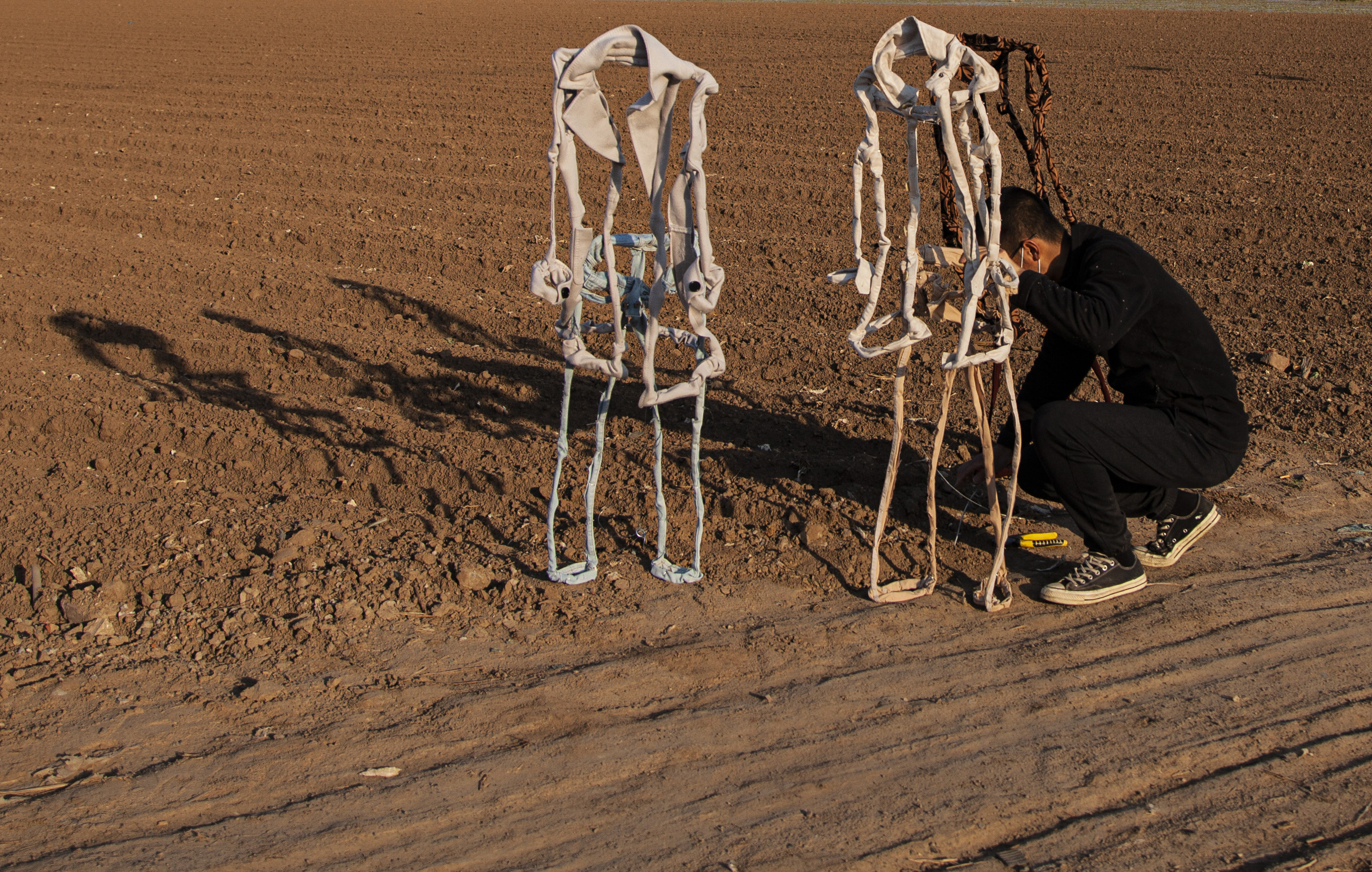

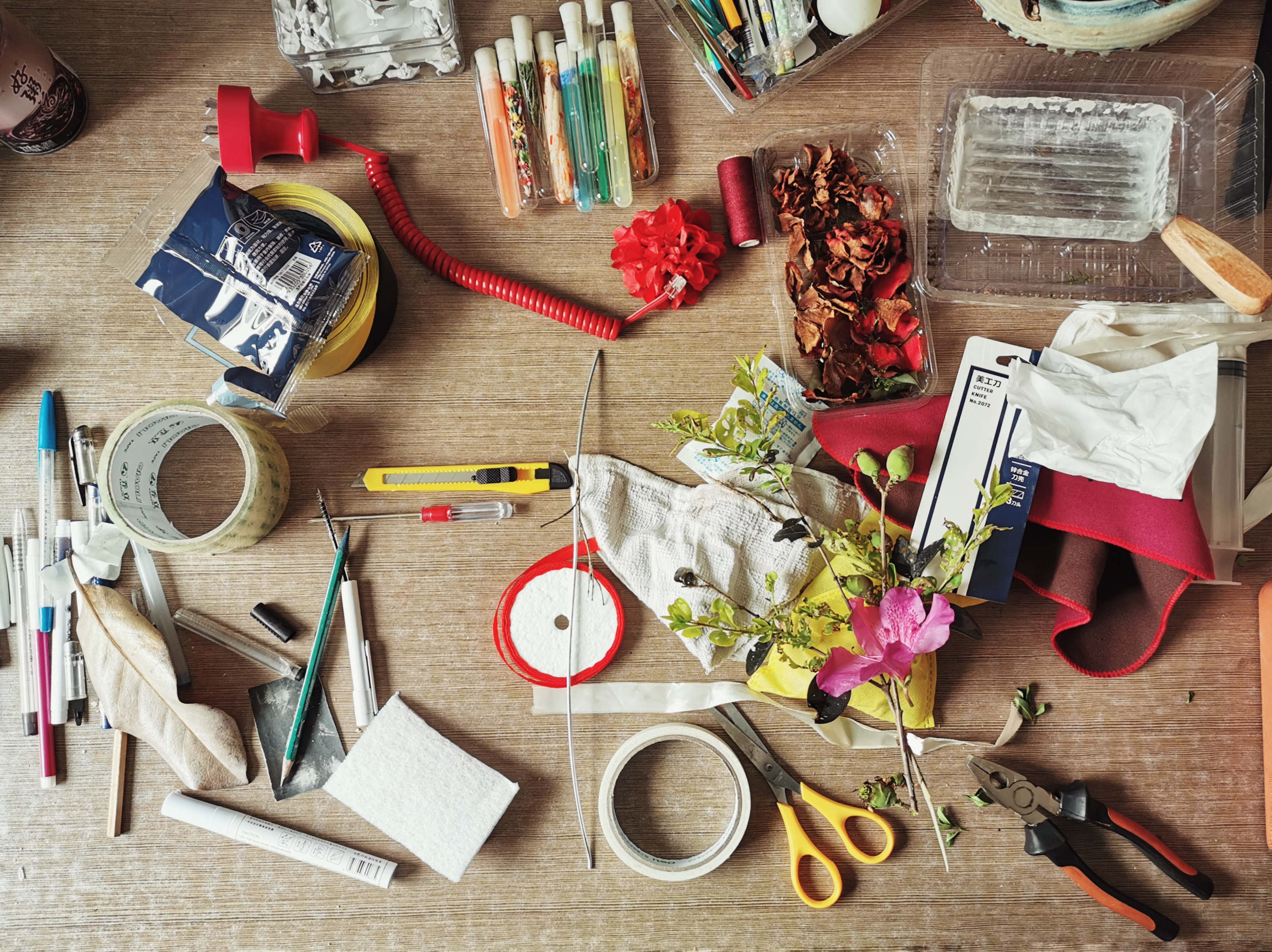
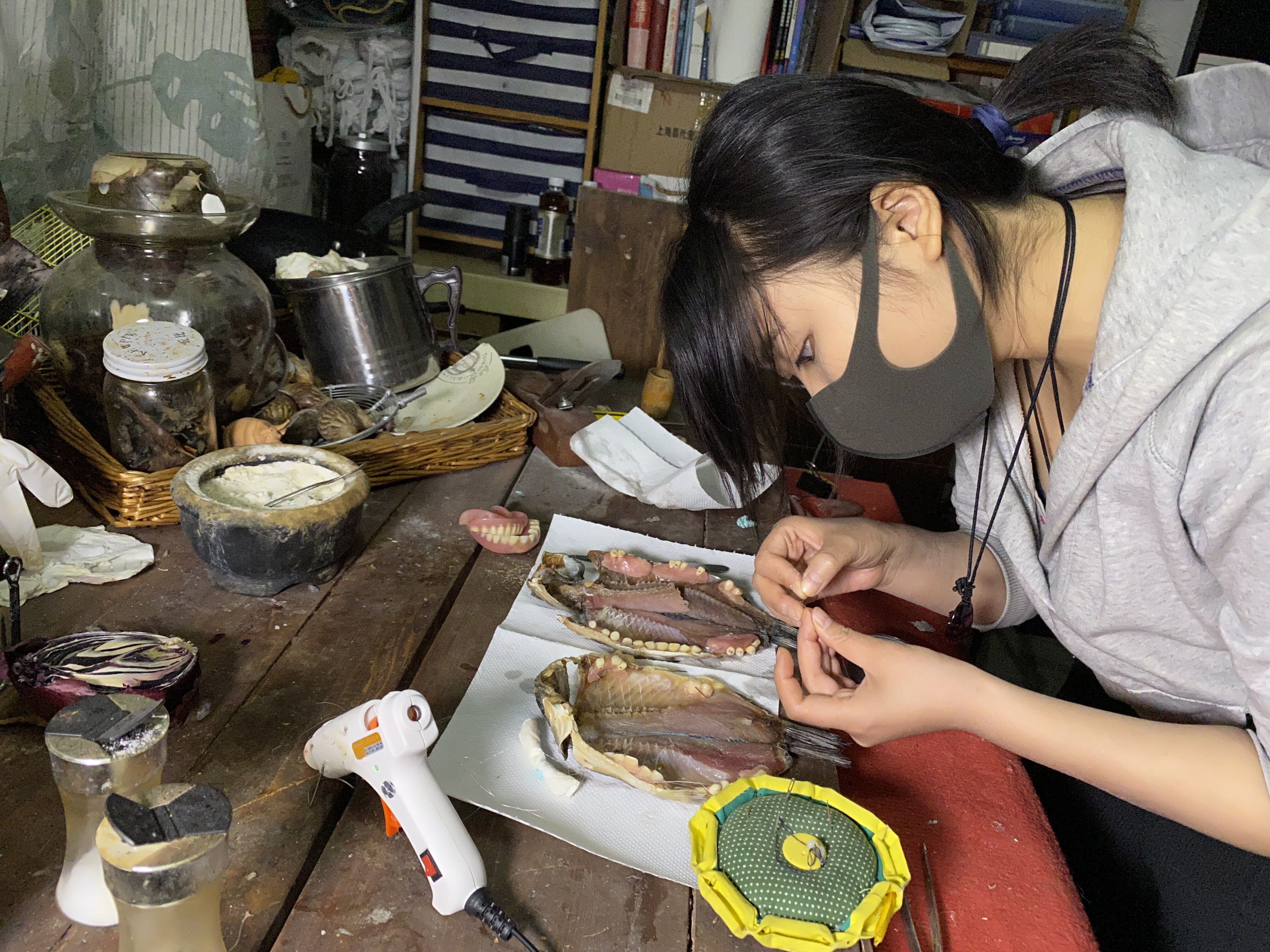
During the pandemic period, students took use their conditions at home to create
III. Online and Offline
CAFA ART INFO: There are huge differences between galleries of modern museums and the online virtual exhibition galleries in terms of technical operations, audience, viewing methods, etc. So how do you think artists should adjust their works to deal with two different forms of exhibition?
Wu Jian’an: The online exhibition is about the interface changes between the audience and the artworks. The communication interfaces that we generally imagine are real spaces such as museums and galleries. Now this communication interface is forced to be screened, so it can only happen on computer screens and mobile phone screens. Some of our classmates originally set the communication interface to be the screen. I think it is very good, because this may be an important direction of art development in the future and these works will be exposed to more people in the future.
For the communication interface of works that was originally set in a real space, it is actually not a problem for them to exhibit online. Because we haven’t seen the original works we have read about them in books or magazines. In fact, we are in contact with the works on a two-dimensional interface. We might see works by masters including Michelangelo, Picasso, Rodin, Giacometti, etc. through photos. Therefore, to deal with the challenges of the communication interface, I think the most effective means are still photography and video. You need to convert the originally planned communication on the three-dimensional communication interface into a good and interesting photography or video which will enable the audience to perceive your work effectively on an alternative interface. This is actually a very interesting challenge. It is an exploration of the way in which your work is released and how the work communicates with the audience.
How to conceive of the shooting of the work, to get a very wonderful photo of the work that can tell the story and convey the elegant or mysterious feeling that people can’t capture at the scene through the photography of the work. This is very interesting. You can also conceive short videos, add voiceovers, display the work in all directions and introduce people to the thinking and concept of the work. These are all methods to allow yourself to actively adapt to the screen interface. Without the stimulation of such a virtual exhibition hall, perhaps we would not have thought for a long time to conceive of photography and video to record, express and disseminate our works. But because of such a thing, we are forced to do some work which forms a process to deeply understand our own works.
CAFA ART INFO: This year is the first time that CAFA has launched the “online” virtual gallery. What do you think of the future development of this new form of graduation exhibition?
Wu Jian’an: Actually, I am not very familiar with this aspect, but it feels like it will become a big trend. The pandemic situation is just a fuse, the main driving force comes from the art popularization trend that the art world has been discussing. It is a big trend as we discuss how art communicates with more people and how the public enters the interface of communication with art. People used to go to museums and galleries, but these spaces have limited capacity and an uneven geographical distribution, making it difficult for more people to really understand the works. The emergence of technology and platforms has made it possible for people to get more first-hand art experience on mobile phones which will break a central communication mode caused by limited resources. Therefore, the popularization of art and the development of technology platforms provide new support, and sooner or later, the so-called online exhibition will be brought to the foreground. Now the pandemic is equivalent to a combustion aid. Everyone has started to pay attention to the online exhibitions. This is a good thing, and there will be more new artistic languages and forms on the platform and many artistic stories will happen. This is all exciting.
CAFA ART INFO: Recently, some people discuss the topic of “offline exhibitions will be replaced.” What do you think of it?
Wu Jian’an: It is impossible for online exhibitions to replace offline exhibitions. After all, these things are not a slogan, a movement, they are made up of individual needs. The audience watching art works are specific persons. As long as there is a group of people who want to watch offline exhibitions, offline exhibitions will definitely exist. In my opinion, this question is a fake question in itself, meaningless.
IV. Slowing down: outstanding feelings under the pandemic
CAFA ART INFO: We have talked about several topics on students’ creations earlier. Now please talk about your status during this period.
Wu Jian’an: When it slowly turns over and becomes history, we will not know how much we are affected by it until we look back. Perhaps my creation has remained the imprint of this event and the epoch. One of the most prominent feelings brought about by the pandemic was slowing down, because I felt that before the pandemic, I was so busy every day that when things were not so busy, I would be anxious: Why was there no one looking for me today? How can this be? Is something wrong? This is actually a loss of efficiency or a strange state of tension. After you get used to a fast pace, speed becomes an addictive thing and you may feel awful without really sinking into thinking, without making the work better, etc. But when you want to be slow, you always have a concern, why aren’t others slow? Will I be left behind if I slow down? If there is no pandemic, we will not be aware of this anxiety and worry. I think it is due to the pandemic and you will suddenly find that you are silly and always worrying about the state of those things. After slowing down, I gradually saw things that I didn’t think about, or things I wanted to do but never did, and they slowly emerged. Only then did I see many of my deficiencies, which I think is crucial.
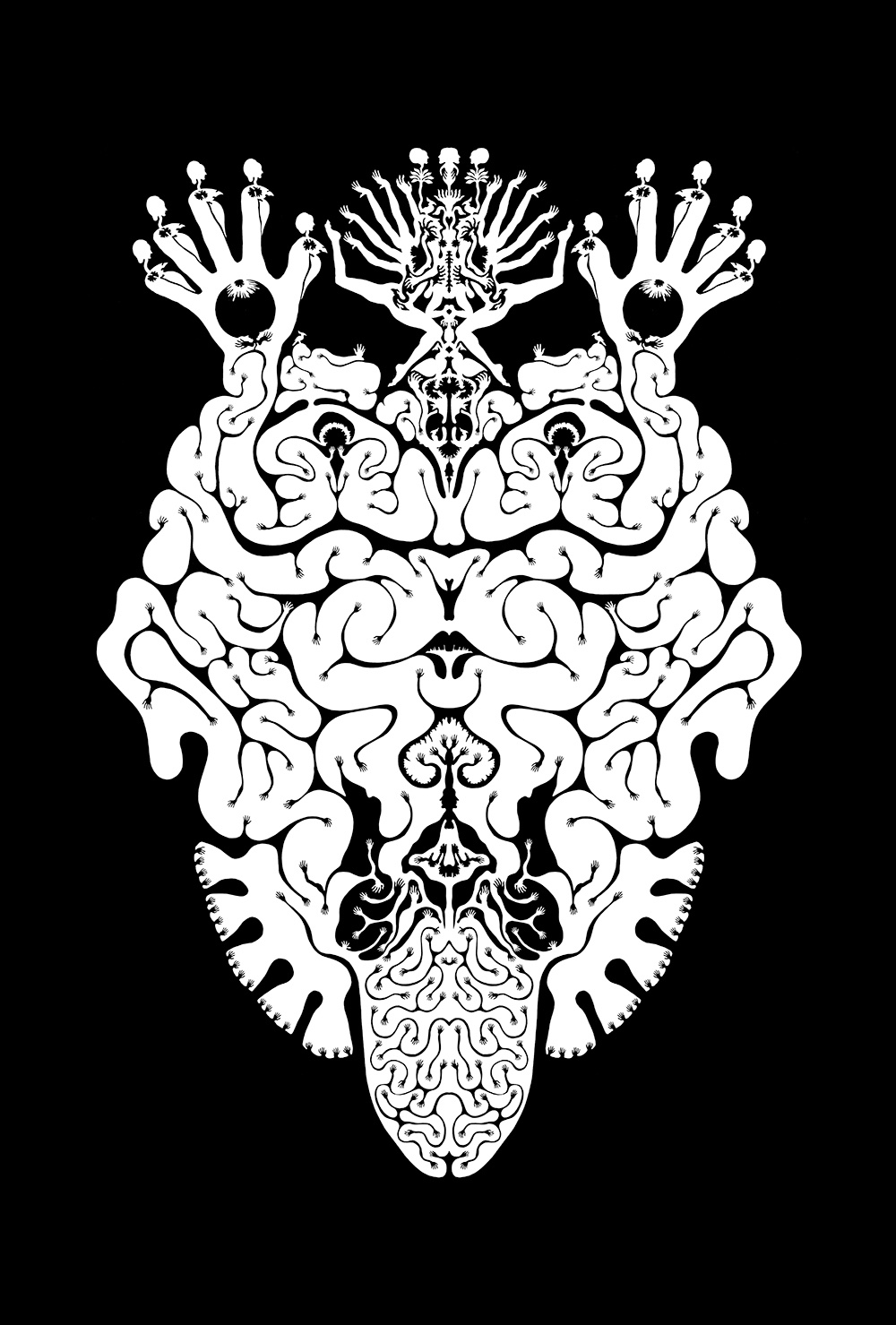
Wu Jian'an, Daydreams Series, 2003-2004, papercut
CAFA ART INFO: Do you remember your graduation exhibition? From then to now, would you like to talk with us about your feelings?
Wu Jian’an: I graduated from the School of Humanities. At that time, I could graduate by submitting a dissertation, so I didn’t have a graduation exhibition. But because I preferred to create, my mentor Mr. Lyu Shengzhong, planned a small exhibition for me, which was done in the small exhibition hall on the fourth floor of the Department of Oil Painting. At that time, CAFA Art Museum was not completed and the graduation exhibitions for graduates were mainly held in the underground exhibition hall and multifunctional hall.
CAFA ART INFO: Finally, please send your wishes to the graduating students.
Wu Jian’an: Be the best of yourself, regardless of what others say.
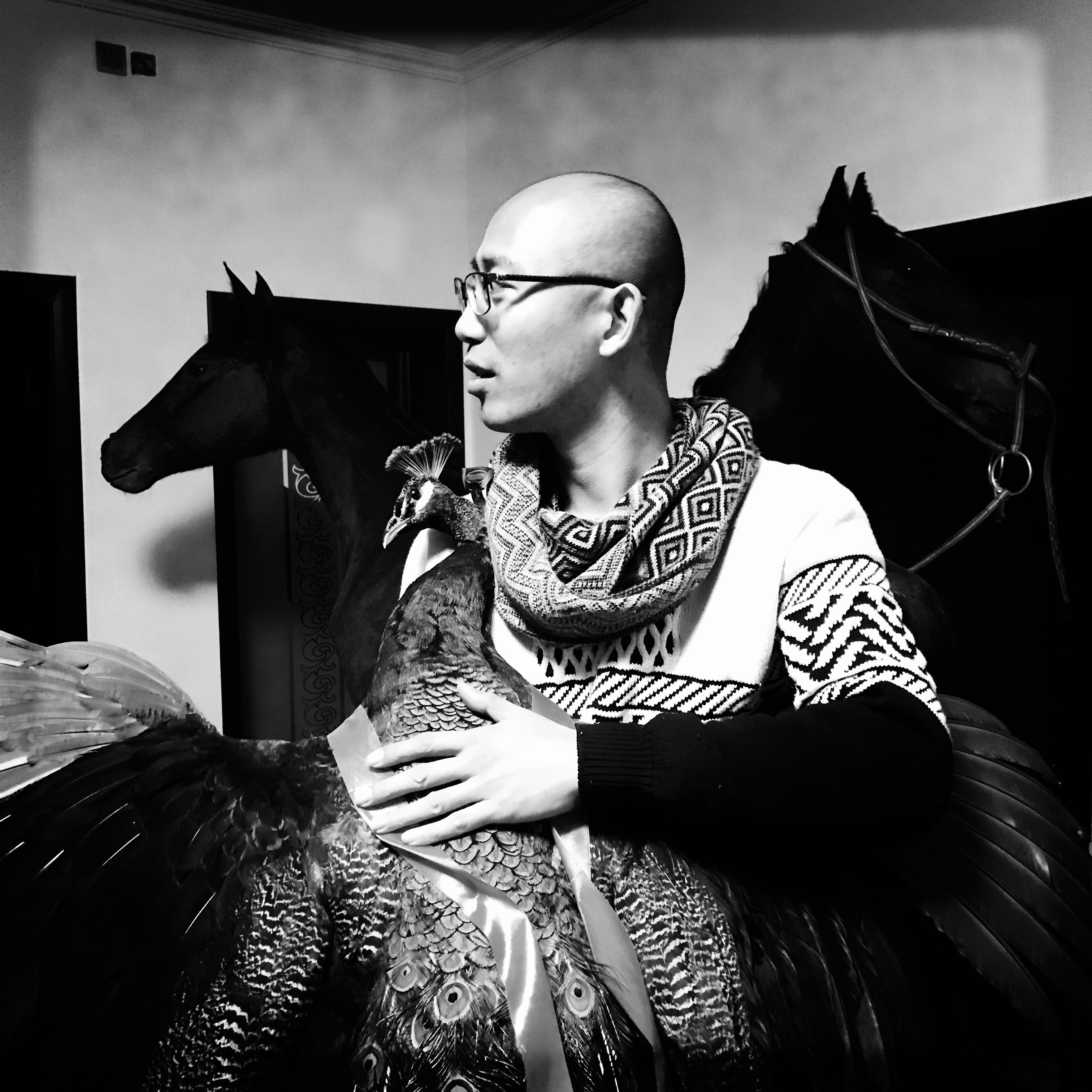
Artist Wu Jian'an, photo by Xiao He
About Artist Wu Jian’an
1980 Born in Beijing, China with the descent in Jinshan, Shanghai
2002 Graduated from Beijing Broadcasting Institute, B.A. Degree, Beijing, China
2005 Graduated from Central Academy of Fine Art, M.A. Degree, Beijing, China
Currently Lives and works in Beijing as Professor and Postgraduate Supervisor of School of Experimental Art of Central Academy of Fine Art, Researcher of the Chinese Traditional Arts Research and Protection Center at the Prince Gong’s Mansion, Ministry of Culture and Tourism, Member of Academic Committee of Beijing Zoo.


